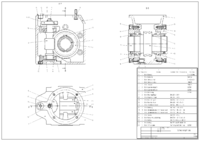
Photo from wikipedia
OBJECTIVE The aim of this paper is to describe a novel algorithm for False Positive Reduction in lung nodule Computer Aided Detection(CAD). METHODS In this paper, we describes a new… Click to show full abstract
OBJECTIVE The aim of this paper is to describe a novel algorithm for False Positive Reduction in lung nodule Computer Aided Detection(CAD). METHODS In this paper, we describes a new CT lung CAD method which aims to detect solid nodules. Specially, we proposed a multi-kernel classifier with a ℓ2, 1 norm regularizer for heterogeneous feature fusion and selection from the feature subset level, and designed two efficient strategies to optimize the parameters of kernel weights in non-smooth ℓ2, 1 regularized multiple kernel learning algorithm. The first optimization algorithm adapts a proximal gradient method for solving the ℓ2, 1 norm of kernel weights, and use an accelerated method based on FISTA; the second one employs an iterative scheme based on an approximate gradient descent method. RESULTS The results demonstrates that the FISTA-style accelerated proximal descent method is efficient for the ℓ2, 1 norm formulation of multiple kernel learning with the theoretical guarantee of the convergence rate. Moreover, the experimental results demonstrate the effectiveness of the proposed methods in terms of Geometric mean (G-mean) and Area under the ROC curve (AUC), and significantly outperforms the competing methods. CONCLUSIONS The proposed approach exhibits some remarkable advantages both in heterogeneous feature subsets fusion and classification phases. Compared with the fusion strategies of feature-level and decision level, the proposed ℓ2, 1 norm multi-kernel learning algorithm is able to accurately fuse the complementary and heterogeneous feature sets, and automatically prune the irrelevant and redundant feature subsets to form a more discriminative feature set, leading a promising classification performance. Moreover, the proposed algorithm consistently outperforms the comparable classification approaches in the literature.
Journal Title: Computer methods and programs in biomedicine
Year Published: 2017
Link to full text (if available)
Share on Social Media: Sign Up to like & get
recommendations!